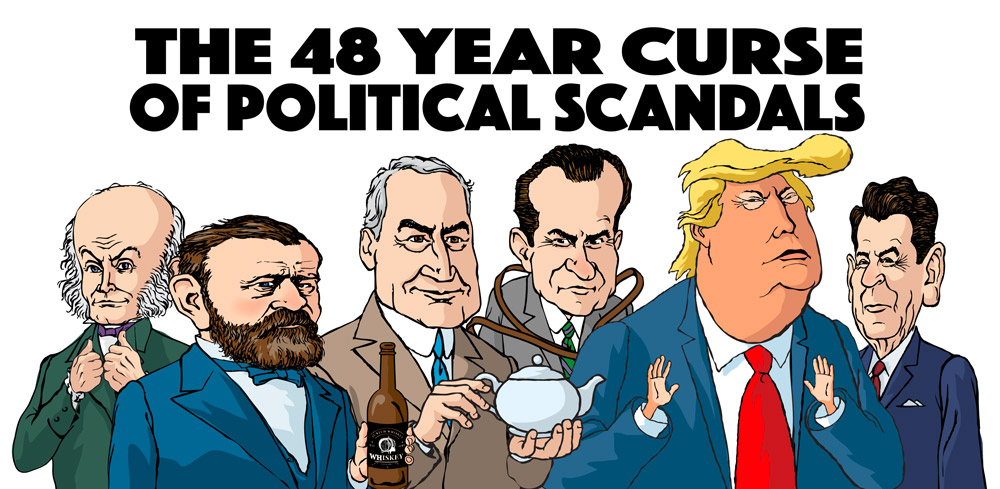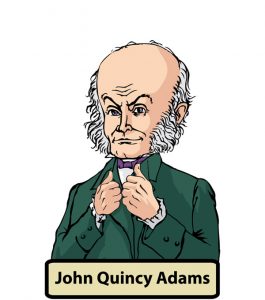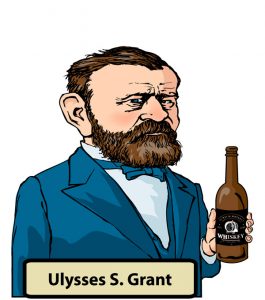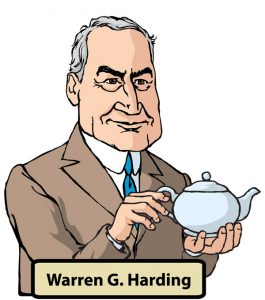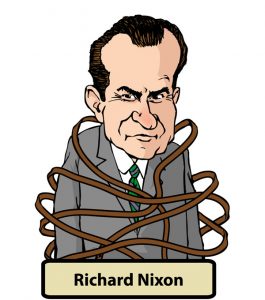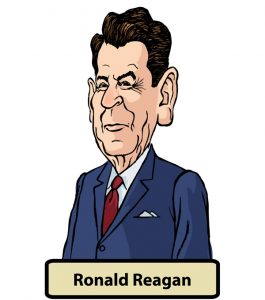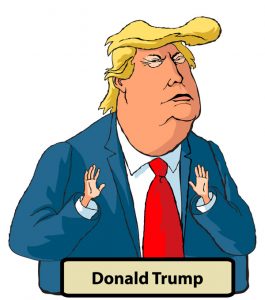Recently, when President’s Day rolled around, I thought of Trump and all the scandals revolving around his presidency. Curious, I looked back at previous presidential scandals and noticed an odd thing, something I call: “The 48 Year Curse of Political Scandals.” Nearly all Presidents have had some controversy during their tenure but the really big ones seem to come 48 years apart.
The election of 1824 got the ball rolling in what was called the “Corrupt Bargain.” Although Andrew Jackson won the popular vote, in a three-way race no one won enough electoral votes to win outright. So the election was decided in the House of Representatives. Henry Clay was the leader of the House and John Quincy Adams persuaded Clay to swing the election in Adams’ favor. Afterwards when Adams made Clay his Secretary of State, Andy Jackson cried “foul.” (Yeah, I know, not much of a scandal compared to what came later but it seems to initiate the 48 year cycle.)
Things really escalated with the election of Ulysses S. Grant. Although a hero of the Civil War, he presided over one of the most scandal-filled administrations ever. Three major scandals rocked his presidency: Black Friday which involved gold speculation, Credit Mobilier which dealt with graft over the Union Pacific Railroad, and the Whiskey Ring which involved government officials pocketing revenues from whiskey taxes. Although Grant was not involved directly with any of the scandals, many of those he put into office were. In all 110 Republican politicians were convicted.
Warren G. Harding became president forty-eight years after Grant’s election. If anything, Harding had even more scandals. He’d brought many friends from his home state of Ohio into his administration. So many that they became known as the “Ohio Gang.” A gang they proved to be and scandals plagued Harding throughout his presidency. The most significant was known as the Teapot Dome, which referred to oil reserves in Teapot Dome, Wyoming. The major figure of the scandal was Albert Fall, Harding’s Secretary of the Interior, who sold the oil rights for his personal enrichment.
Again, forty-eight years after Harding’s election came the presidency of Richard Nixon. “Watergate” has become synonymous with presidential scandals and it goes back to Nixon. The Watergate business complex was where the Democratic National Committee headquarters was located. Five men, acting on Nixon’s behalf, broke into the DNC’s offices to steal information. They were caught and the cover-up by Nixon and his staff began. Eventually secret audio tapes revealed the plot and led to 69 government officials being charged with felonies. Nixon—facing certain impeachment and removal from office—resigned.
Although it doesn’t fit the 48 year cycle (since it came a mere twelve years after Nixon’s initial election) Ronald Reagan’s Iran-Contra affair was a major presidential scandal. The administration sold missiles to Iran in return for U.S. hostages and then used part of the money to fund the Contra rebels in Nicaragua. These acts were done in secret because the Iranian sales violated international laws and the funding of the Contras had been specifically outlawed by a Congressional act. Fourteen administration officials were eventually indicted.
And now, forty-eight years after Nixon’s first election, we have the presidency of Donald Trump. How this will shake out, no one knows at this point. But it looks to be rife with scandals involving personal enrichment by the President and his family, likely collusion with Russia, and God only knows what else. No doubt about it, with just a little over a year in office, Trump’s White House is proving to be the most chaotic ever and, most likely, will prove the most scandalous.
All I can say is: Americans in the year 2064 had better be prepared.
These caricatures were drawn with ink on paper, scanned into the computer, tweaked and colored in Illustrator and finally sent to Photoshop where they were turned into jpegs. (Click on each image to see a larger version.)
